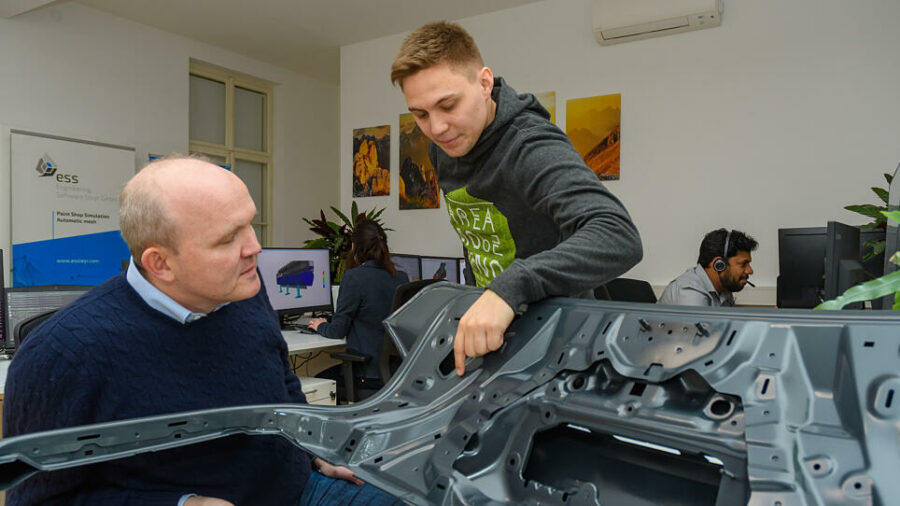Hidden Software Champion

In January 2015, Martin Schifko, born in Styria, founded the unique software company Engineering Software Steyr (ESS) by buying-out his paint shop simulation from automotive supplier Magna. At the end of the first business year, he had two employees and only four short years later, ESS boasts over fifty employees from 17 different nations, 35 work at headquarters in Steyr.
Sales are growing at a double-digit rate and subsidies are flowing. This year sales are expected to reach three million euros. Because the demand for this special software, especially from the automotive industry, is so high, Schifko can hardly resist the inquiries. The founder and managing director says, “All doors are open.”
Employees from all over the world have been attracted to this small company from Steyr because the software is so special, and few companies use this know-how. “The employees and their families have moved to us from India, Iran, and Poland,” says Schifko, who is visibly pleased with the creative and multicultural diversity of its people. Half of ESS employees have PhDs.
What makes the software so special? One of ESS’s current projects is the simulation of the coating of cavities in body parts with flood wax for Audi and Volkswagen. These are very complex processes. In this process, the wax is sprayed into the cavity with nozzles as corrosion protection. ESS software can be used to calculate how to achieve the minimum layer thickness, avoid air inclusions and detect which drill holes are required for the excess wax to run out completely. These simulations help carmakers to radically reduce costs and optimize production. “The need to drill an additional hole in a component in the prototype phase can quickly cost 200,000 euros; our software helps to avoid such situations,” says Schifko.
With ESS software, changes in the production process can be simulated easily and at minimal cost in order to save on expensive prototypes. Schifko also makes use of unusual methods to test and experiment–for example, he took his own Audi Q3 car door, glued the holes, filled them with liquid and then uses the data read out for further programming. If a car is perfectly painted, rust is prevented, and the longevity of the cars increases manifold. “Fifty percent of car manufacturers worldwide use ESS special software,” says Schifko. “Our export quota is 95%.” The US company, MSC, has been an excellent sales partner since the fall of 2018.
One advantage of ESS’ automated data processing is that the software is very user-friendly. Not only technicians, but also designers (of car parts, for example) can use it. This also requires very high computing power. ESS uses graphics cards with 660 teraflops. “The JKU, with the second largest Intel cluster in Europe, has 50 teraflops,” Schifko commented.
By Ulrike Rubasch (OÖN)
Read the full article in German here.